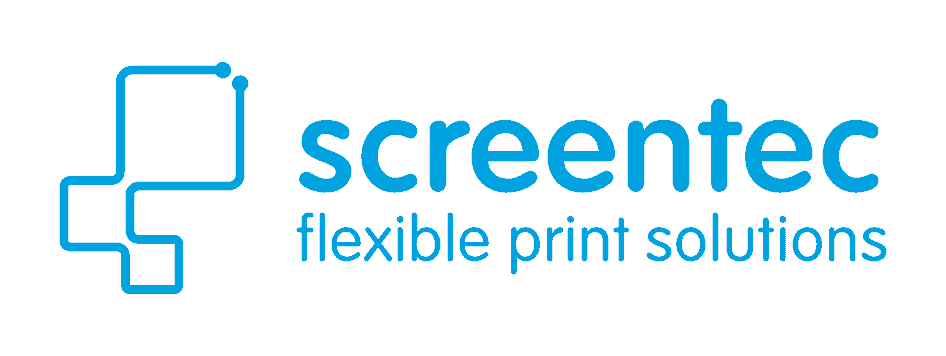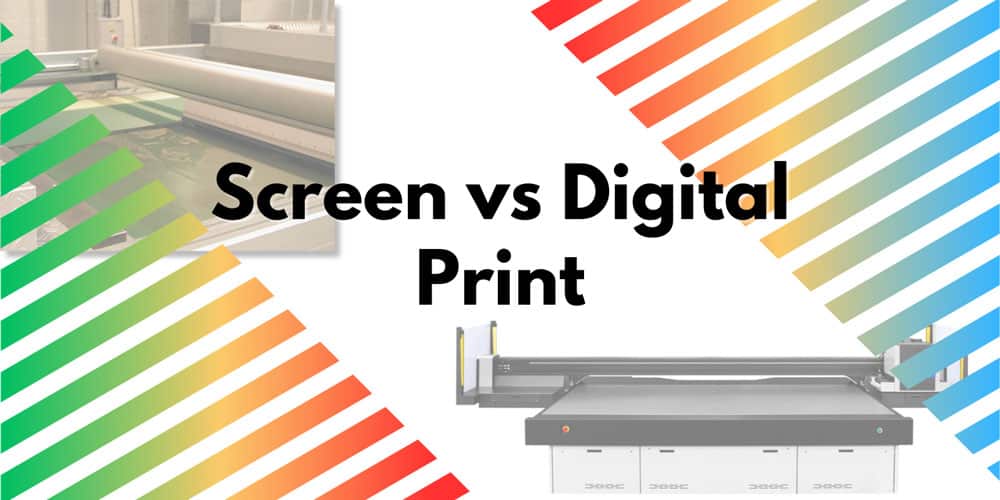When it comes to printing, there are various methods available, each with its own advantages and considerations. Two commonly used techniques are screen printing and digital printing. Understanding the differences between these methods can help you make an informed decision about which one is best suited for your specific print requirements. In this blog post, we will explore the differences between screen printing and digital printing, allowing you to choose the right method for your print needs.
Screen Printing
Screen printing is a traditional printing method (one that we have been masters of since the early 90’s!) that involves transferring ink onto a substrate through a fine mesh screen. Here are some key points to consider:
Versatility
Screen printing can be used on a wide range of materials, including textiles, paper, plastic, glass, and metal. It offers flexibility in terms of size, shape, and thickness of the substrate.
Vibrant Colours
Screen printing can produce vibrant and opaque colours, making it ideal for designs that require high colour saturation or specialty inks like metallic or fluorescent.
Durability
Screen-printed designs tend to be highly durable and resistant to fading, making them suitable for items that will undergo frequent use or exposure to various environmental conditions.
Digital Printing
Digital printing is a modern printing method that involves directly transferring digital files onto a substrate using advanced inkjet or laser technologies. Here are some key points to consider:
Quick Turnaround
Digital printing offers fast turnaround times, as it eliminates the need for lengthy setup processes, such as creating screens or plates. It is ideal for projects that require a quick production timeline.
Variable Data Printing
Digital printing allows for personalised or variable data printing, making it suitable for projects that require unique content on each printed piece, such as direct mail campaigns or personalised promotional materials.
Colour Accuracy
Digital printing offers excellent colour accuracy and consistency, ensuring that the printed output closely matches the digital design. This makes it suitable for projects that require precise colour reproduction.
Cost-Effective for Small Print Runs
Digital printing is cost-effective for smaller print quantities since there are no setup costs associated with plates or screens. It eliminates the need for minimum order quantities, making it suitable for print-on-demand or short-run projects.
Choosing the right method
When deciding between screen printing and digital printing, consider the following factors:
Quantity
Screen printing is more cost-effective for larger quantities, while digital printing is suitable for smaller print runs.
Material and Application
Consider the substrate material and the intended use of the printed materials. Screen printing works well on various materials, including textiles, while digital printing is versatile across different paper and plastic-based materials.
Design Complexity
Screen printing is better suited for bold, solid colours and simple designs, while digital printing can handle intricate details and gradients more effectively.
Timeline
If you require a quick turnaround, digital printing is the preferable choice due to its efficient setup process.
Both screen printing and digital printing offer unique advantages depending on your specific print needs. Consider factors such as quantity, substrate material, design complexity, and timeline when deciding between the two methods. Whether you prioritise durability, vibrant colours, quick turnaround, or cost-effectiveness, understanding the differences between screen printing and digital printing will help you make an informed decision and achieve the best possible results for your print projects.
You’ll be glad to know that at Screentec we have an array of Digital & Screen Printing machines on site and ready to take on your next print job, whichever method you prefer! Get in touch today.


Recent Comments